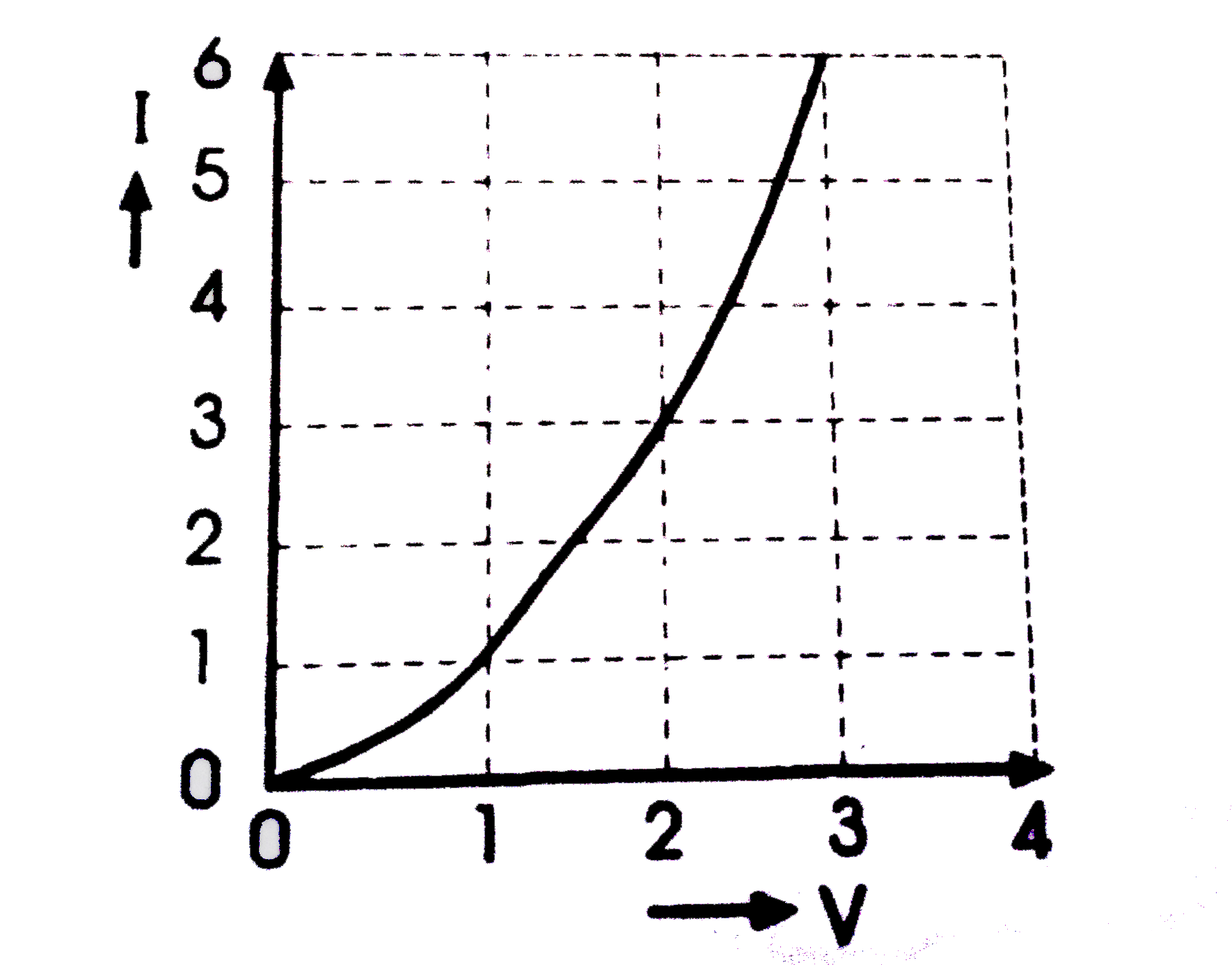A cell of emf 1.5 V and internal resistance 0.5Ω is connected to a (non-linear) conductor whose V-I graph is shown in Fig. 4.36 (a). Obtain graphically the current drawn from the cell and its terminal voltage.
Step by step video & image solution for A cell of emf 1.5 V and internal resistance 0.5 Omega is connected to a (non-linear) conductor whose V-I graph is shown in Fig. 4.36 (a). Obtain graphically the current drawn from the cell and its terminal voltage. by Physics experts to help you in doubts & scoring excellent marks in Class 12 exams.
Updated on:21/07/2023Topper's Solved these Questions
- CURRENT ELECTRICITYBOOK - SL ARORACHAPTER - CURRENT ELECTRICITYEXERCISE - Problems From Competitive
18 Videos
- CURRENT ELECTRICITYBOOK - SL ARORACHAPTER - CURRENT ELECTRICITYEXERCISE - Problems For Self
101 Videos
- CHEMICAL EFFECT OF CURRENTBOOK - SL ARORACHAPTER - CHEMICAL EFFECT OF CURRENTEXERCISE - TYPE-B
5 Videos
- ELECTRIC POTENTIAL AND ELECTRIC FLUXBOOK - SL ARORACHAPTER - ELECTRIC POTENTIAL AND ELECTRIC FLUXEXERCISE - Problems for self practive
61 Videos
Similar Questions
A cell emf 3V and internal resistance 0.75Ω is connected to a nonlinear conductor whose V-I g raph is shown in figure obtain graphically the current drawn from the cell and its terminal voltage.

View Solution(a) Six lead-acid type of secondary cells each of emf 2.0 V and internal resistance 0.015 Ω are joined in series to provide a supply to a resistance of 8.5 Ω. What are the current drawn from the supply and its terminal voltage ?
(b) A secondary cell after long use has an emf of 1.9 V and a large internal resistance of 380 Ω . What maximum current can be drawn from the cell ? Could the cell drive the starting motor of a car?
View Solution
Knowledge Check
A cell of emf 2 V and internal resistance 0.1Ω is connected with a resistance of 3.9Ω The voltage across the cell terminal will be
A1.95VB1.90VC0.50VD2.00VA cell of emf 2.0 V and internal resistance 0.1 Ω is connected with a resistance of 3.9Ω. The voltage across the cell terminals will be
A0.50 VB1.90 VC1.95 VD2.0 V
(a) Six lead-acid type of secondary cells, each of emf 2.0 V and internal resistance 0.015Ω are joined in series to provide a supply to a resistance of 8.5Ω. What are the currents drawn from the supply, and its terminal voltage?
(b) A secondary cell after long use has an emf 1.9 V and a large internal resistance of 380Ω. What maximum current can be drawn from the cell? Could the cell drive the starting motor of a car?
View Solution(a) Six lead-acid type of secondary cells each of emf 2−0 V and internal resistance 0−015Ω are jouned in series to provide a supply to a resistance of 8−5Ω. What are the current drawn from the supply and its terminal voltage ?
(b) A secondary cells after long use has an emf of 1−9 V and a large internal resistance of 380Ω. What maximum current can be drawn from the cell ? Could the cell drive the starting motor of a car ?
View SolutionA cell of emf 1.1V and internal resistance 0.5Ω is connected to a wire of resistance 0.5Ω. Another cell of the same emf is connected in series bur the current in the wire remain the same .Find the internal resistance of second cell
View SolutionFind the current drawn from a cell of emf 1 V and internal resistance (2/3)Ω connected to the network shown in figure

View SolutionFind the current drawn from a cell of emf 2 V and internal resistance 2Ω connected to the network given below.

View SolutionA dry cell of emf 1.6V and internal resistance of 0.10Ω is connected to a resistor of resistance Rω. If the current drawn the cell is 2A, then (i) What is the voltage drop across R ? (ii) What is the rate of energy dissipation in the resistor ?
View Solution
